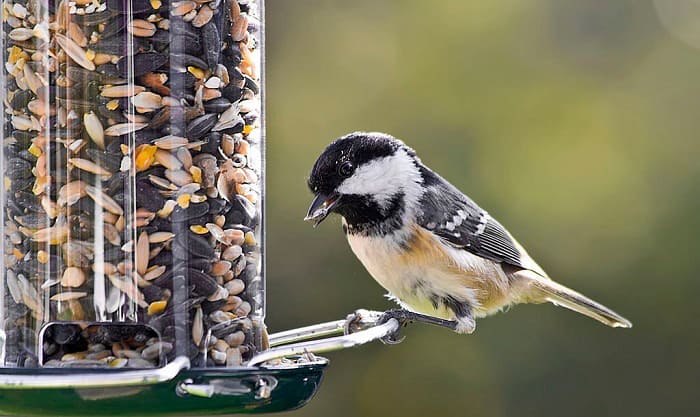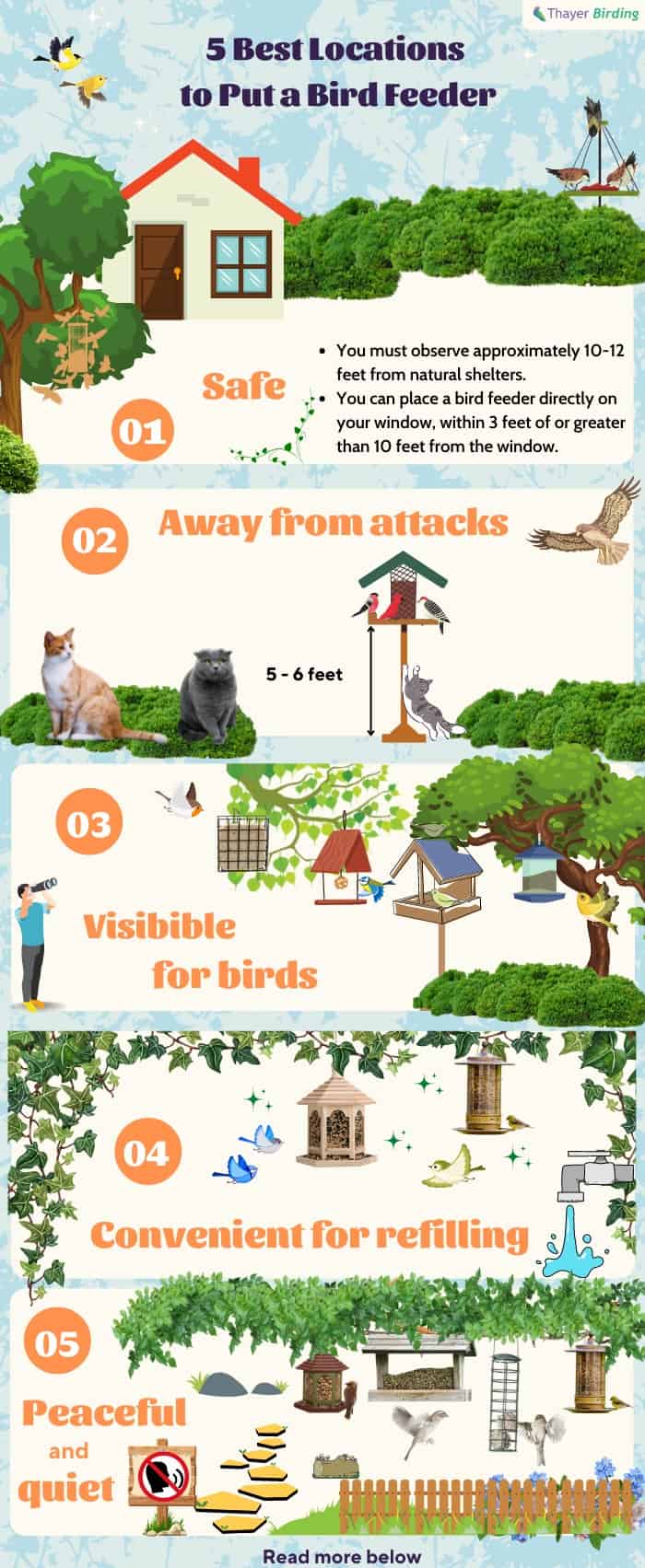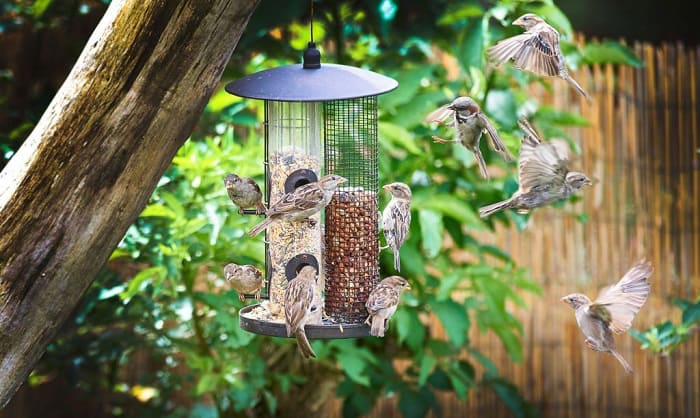The primary purpose of a bird feeder for birders is to watch the birds as they eat without harming them. Therefore, locating the perfect bird feeder placement is challenging because you must consider various factors such as visibility, safety, and convenience.
So, where is the best place to put a bird feeder? Bird feeders should usually be placed in your garden or backyard near a bird’s natural habitat but away from the noise, predators, and obstruction. If you don’t have a spacious garden, you can put a bird feeder within 3 feet of your window.
Table of Contents
The Best Location to Put a Bird Feeder
Choosing the ideal place for bird feeders is essential to maximize the benefits of being a bird-watcher.
- First, you get to feed the birds.
- You also have the chance to meet and observe various species of birds.
- Third, the birds can help keep your garden healthy—pest or weed control and pollination.
Countless bird feeder area ideas are going around that you find it hard to decide where to put yours. Thus, here are some pointers you should consider when selecting the best spot for a bird feeder.
1. Safe
The first thing you need to consider is the location’s security. You should place bird feeders near trees, shrubs, or bushes so birds can easily take flight when they sense danger. Ideally, you must observe approximately 10-12 feet from natural shelters.
Moreover, you must reckon the gap between a bird feeder and a window. Most birds die or get injured from window collisions. Preferably, you can place a bird feeder directly on your window, within 3 feet of or greater than 10 feet from the window. This interval allows birds to decrease or increase momentum for a safe landing or take-off.
2. Away from attacks
Along with the safety measures you need to study, a bird feeder’s height is also essential. It should be high enough so cats couldn’t jump over it.
However, it must not be too high, so squirrels and raptors like hawks couldn’t easily harm the birds on it. You can hang bird feeders at eye level or a little higher, usually 5 to 6 feet from the ground.
3. Visibible for birds
Visuality goes for both the birder and the birds. Place bird feeders in a place where birds can easily spot them when they pass through your area.
Additionally, maintaining your garden’s landscape and adding a variety of foods can attract birds to your bird feeder.
On the other hand, your bird feeder’s location should allow you a VIP pass to watch the birds do their thing. You should be able to observe the birds without disturbing them. More so, this will allow you to spot drawbacks efficiently.
4. Convenient for refilling
Another factor to consider is the location’s convenience. It should be accessible for you to refill the bird feeder easily. What’s more, having bird feeders may get messier than you think.
Therefore, you should be able to clean and maintain the area effortlessly, probably near water sources.
Related guide: The easiest way to clean a bird feeder.
5. Quiet and peaceful
One more thing to weigh up is the site’s condition. You should put bird feeders far from activities such as busy doors or windows, bustling streets, and noisy spots. Generally, bird feeders should be in a quiet environment to help the birds feel safe.
Bird Feeder Hanging Ideas
Now that you have the points to review when setting up your bird feeder, you should have an idea by now where to place it.
If you still have doubts about the right location, below are some ideas you may consider.
1. On a sturdy backyard tree
Among the most popular bird feeder ideas is to hang bird feeder from tree. You can pick sturdy branches from your preferred tree in your backyard, then display your bird feeders on them.
However, trees are susceptible to squirrels, so investing in a squirrel-proof bird feeder would be ideal.
2. On a pole (hopper feeder)
If you have second thoughts about hanging a bird feeder from a tree or don’t have a reliable tree branch, you can use a pole as a substitute. A post that is mounted to the ground is ideal for easy adjustments.
Say you noticed that the previous location was a bit unsafe for birds. You can quickly relocate or add poles to your garden.
Hanging feeders from a tree usually attract woodpeckers and wrens. While those that are hanging from a pole charm small birds like chickadees and goldfinches.
3. On the gutter
Alternatively, you can hang bird feeders on gutters. Eavestrough cannot bear heavy materials, thus, making it an inadequate place for a bird feeder.
4. On the wall
However, if you plan to set up a single small feeder, hanging it on your rain gutter might do the trick. For houses with small backyards, hanging bird feeders on the walls using mounts or brackets are practical.
You can use a platform feeder, tube feeder, hummingbird feeder, suet feeder, and wood feeder if you choose to hang them in your backyard.
Backyard Bird Feeding Station Ideas
1. Low-Level Bird Table
If you like a low-maintenance bird feeder, opting for ground feeding trays or simple bird tables might be your best choice.
Use small tables, pedestals, or old plates as ground bird feeder trays. If you don’t have ground trays, you can sprinkle the feeds directly onto the ground.
You can put the seeds or nuts into the tray and leave it in an accessible location for birds.
However, low-level bird tables may not be the best idea on windy days. The winds would flip the trays over and sweep the seeds away.
Ground bird feeders may also expose the birds to raccoons, squirrels, cats, and other house pets. These animals may disturb the birds and scare them away.
Other than that, ground bird feeders still attract birds such as sparrows, jays, and blackbirds.
2. Window Bird Feeders
What will you do if you have no garden and want to watch birds?
The answer is you can fixate your bird feeders on your window. However, remember that birds may unintentionally hit your window and hurt themselves. Hence, minimizing the reflection from your glass would avoid such cases.
If you have a garden or yard that you can utilize but still want your bird feeder near the window, observing proper distancing would be of great help.
As mentioned earlier, bird feeders by the window should be within 3 feet or greater than 10 feet.
Conclusion
Where is the best place to put a bird feeder? Well, you can put it almost anywhere, whether on the ground, hanging, or mounted to the wall or window, as long as it is safe from dangers and predators.
The position of your bird feeder should also offer birds a lookout view and temporary refuge. More so, it should be convenient to clean and maintain.
We have received various questions regarding bird feeders, such as “Should I put a bird feeder near my garden?” The answer is yes. A garden or backyard is the most suitable location for a bird feeder.
We hope this article may come in handy when you ponder the proper placement of your bird feeders.

George and I became friends after a birdwatching trip with our new group. And we have been enjoying every adventure together. When he told me the idea of establishing a site that shares our experiences and fun, I immediately agreed. After trials and errors, here we have Thayerbirding.



















